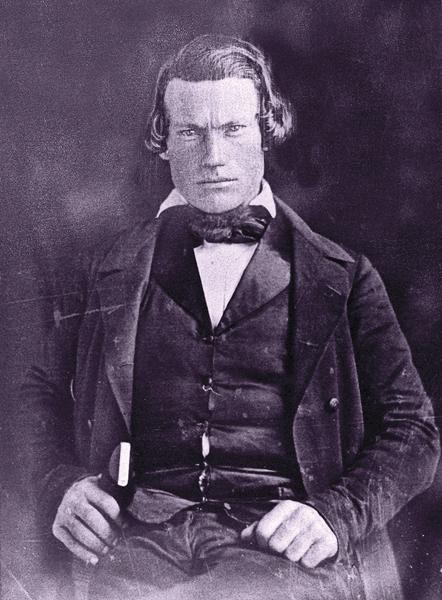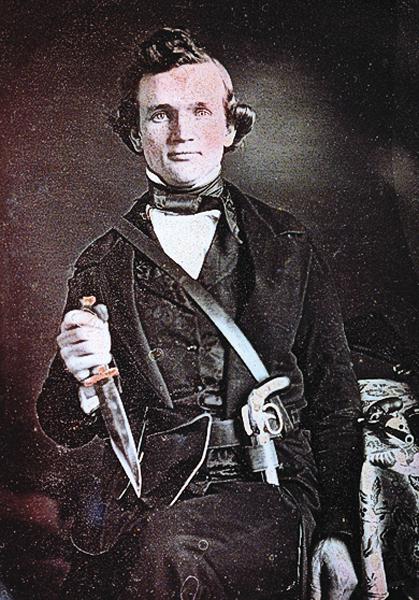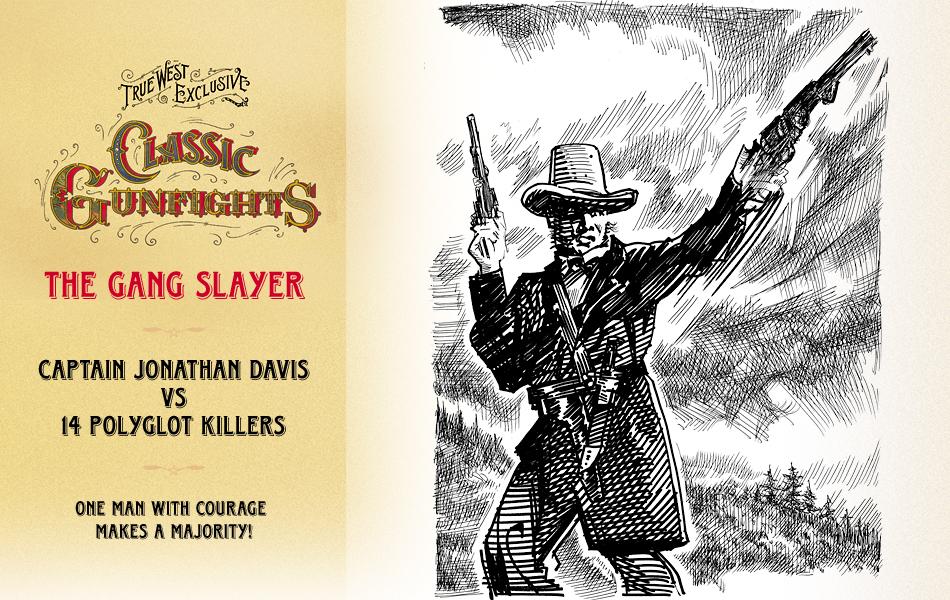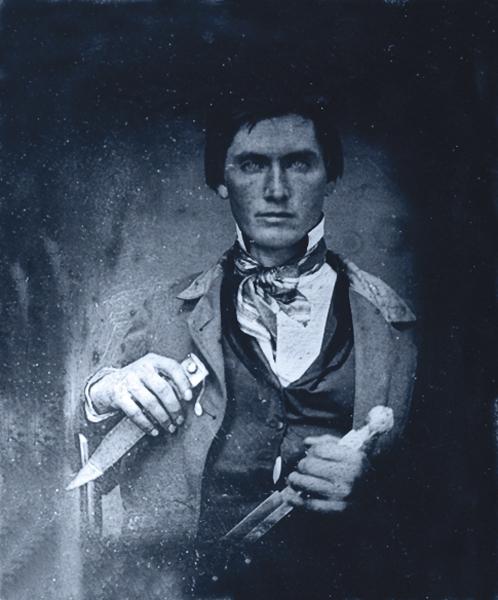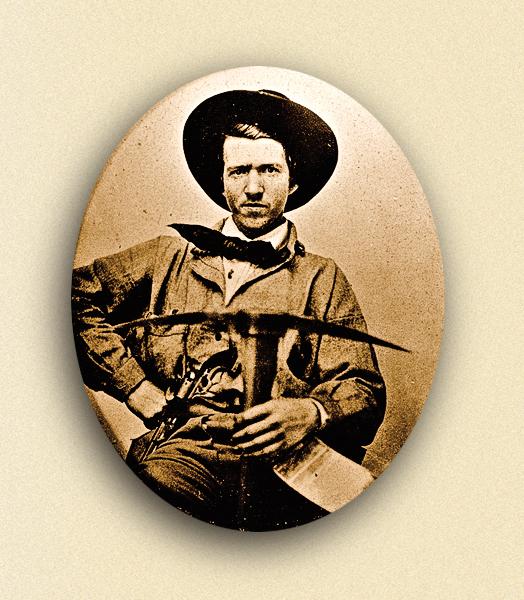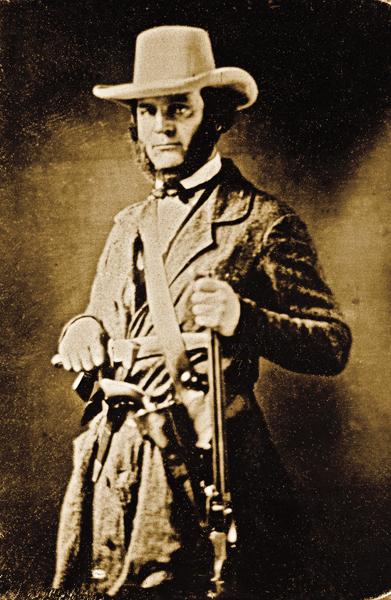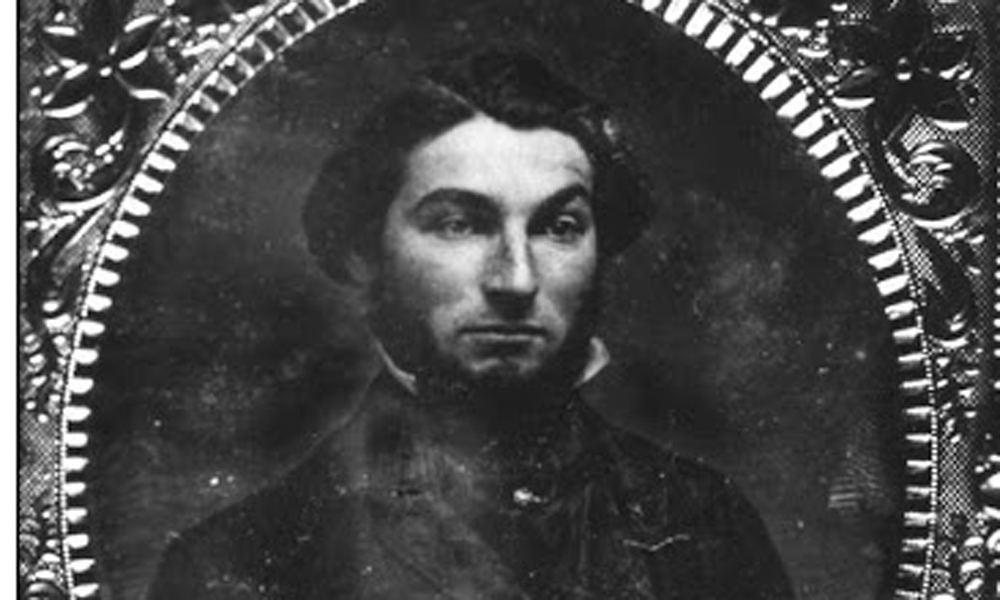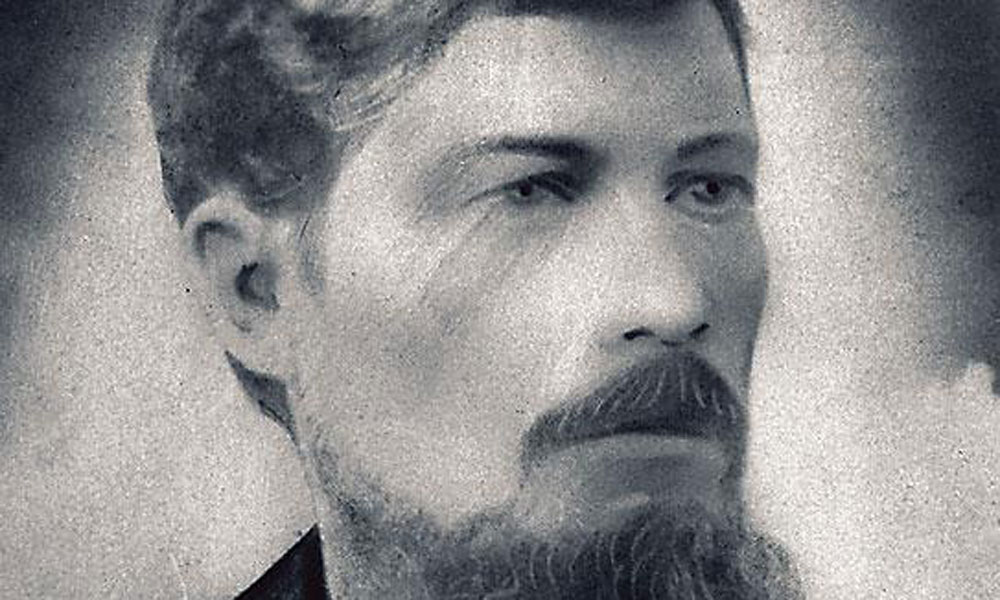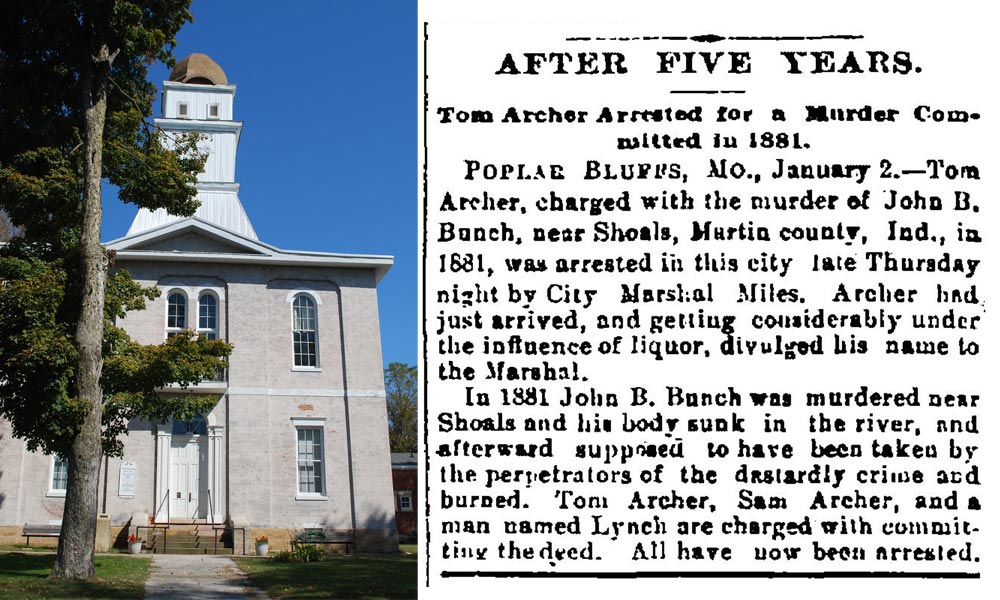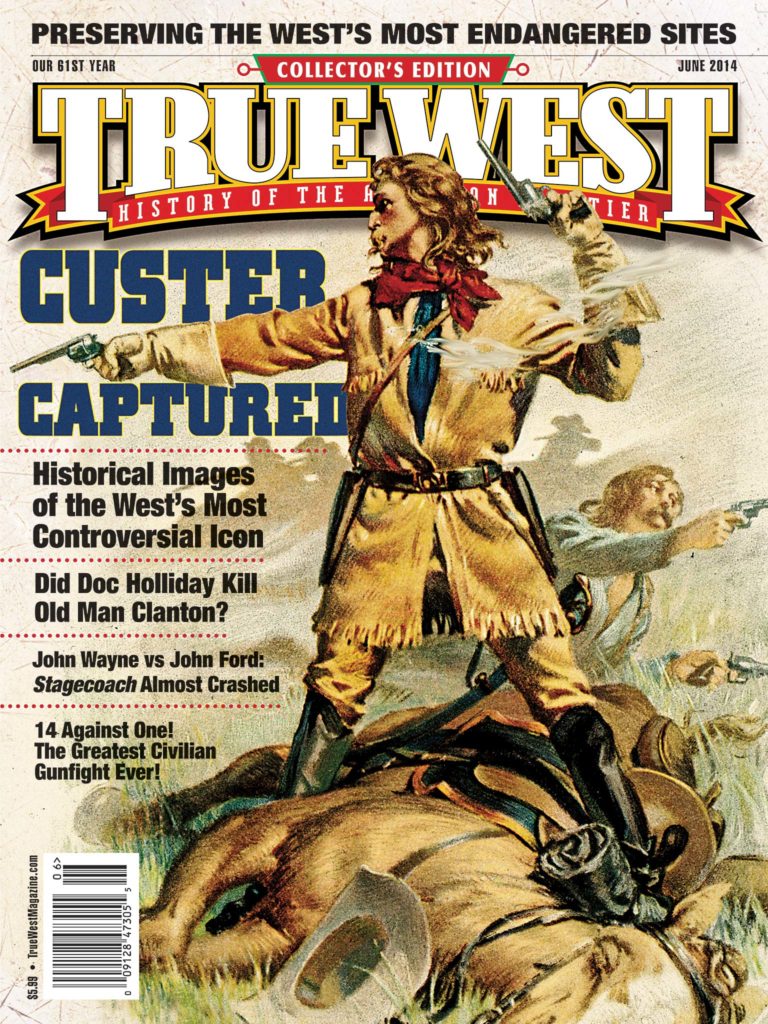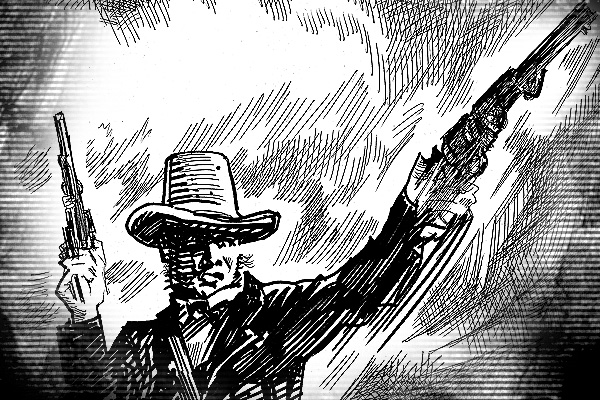 December 19, 1854
December 19, 1854
Three American prospectors are traversing a miner’s trail in California’s Sierra Nevada Mountains (see map below).
As Capt. Jonathan Davis, James McDonald and Dr. Bolivar Sparks walk up the trail, they are ambushed by a large gang of bandits (two Americans, one Frenchman, two Britons, four Mexicans and five Sydney Ducks, members of an Australian gang of criminals who wreaked havoc in San Francisco). This gang has been on a two-day violent crime spree, killing and robbing six Chinese and four Americans.
Jumping out of the brush with pistols blazing, the outlaws cut down McDonald, who dies without drawing his weapon. Dr. Sparks yanks his six-shooter and gets off two shots before he is badly wounded and drops to the ground.
Captain Davis pulls two pistols and begins returning fire, dropping outlaws with almost every shot. Several outlaw balls rip through the captain’s clothing (a friend later counts six bullet holes in Davis’s hat). Despite his two slight flesh wounds, Capt. Davis stands his ground, emptying both pistols with deadly accuracy. Seven of his attackers lay writhing and dying in front of him on the rocky terrain.
Four more robbers—all armed with Bowie knives, and one with a short sword—warily advance on the captain to finish him off. Davis pulls his Bowie knife and engages the two leaders, stabbing one to death and knocking the knife out of the other’s grasp, a maneuver that slices off the leader’s nose and the finger on his right hand.
The last two attackers fare no better, as Capt. Davis dispatches them both with ease (they are weakened by their wounds from previous raids).
As the gunpowder and dust clears, one lone fighter has bested nearly a dozen of the worst “lawless ruffians” California has to offer, with seven of the would-be robbers dead and four desperately wounded (all four will die from their wounds). The three remaining outlaws flee for their lives.
Ignoring his own wounds, Capt. Davis removes his shirt and tears it in strips to help out Dr. Sparks and wounded robbers.
When three more armed men come up the trail, Davis leaps to McDonald’s body and retrieves his dead friend’s revolver, shouting, “Halt!”
To his relief, the three turn out to be members of a mining hunting party camped a mile distant, on a creek running into the North Fork of the American River. While out hunting, they saw the entire fight from a nearby hilltop.
***Aftermath: Odds & Ends***
The bodies of the dead outlaws were searched, and the miners recovered $491 in gold and silver coins, four ounces of gold dust and seven gold and two silver watches. At Capt. Jonathan Davis’s request, the bounty was given to Dr. Bolivar Sparks.
Dr. Sparks was carried down the mountain, by Capt. Davis, to the doctor’s home near Coloma, California, where he died from his wounds on December 26.
Even though the fight garnered extensive coverage in the newspapers (eventually across the country), some doubters thought it too fantastic to be true. Stung by the criticism, Capt. Davis challenged anyone to come along to Rocky Canyon, where he would show him or her the attackers’ graves. No one took him up on his offer.
Three months after the battle, Davis and three eyewitnesses to the fight—John Webster, Isaac Hart and P.S. Robertson—appeared at the offices of the Mountain Democrat. Before Judge R.M. Anderson and a delegation of prominent citizens, the men presented written and verbal depositions of the fight to everyone’s satisfaction.
Even though Capt. Davis’s peers finally accepted his story, it’s hard to believe that 160 years later, hardly anyone remembers the fight. That’s a shame. The incredible gunfight was rediscovered in the 1980s by researcher and author Bill Secrest Sr. With further research by John Boessenecker, the fight has a chance of reclaiming its rightful honor, Boessenecker states, as “the single most extraordinary feat of self-defense by an American civilian in the annals of frontier history.”
Recommended: Gold Dust and Gunsmoke by John Boessenecker, published by John Wiley & Sons.
Photo Gallery
– Courtesy John Boessenecker –
Virtually everyone who worked the goldfields in California went heavily armed at all times. As these three photographs of 49ers from the period attest (this and next two slides), both pistols and knives (and even picks!) made for effective self-defense.
– Courtesy Doug Scougale –
– Illustrations by Bob Boze Bell –
– Courtesy John N. McWilliams –


